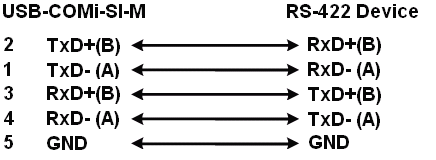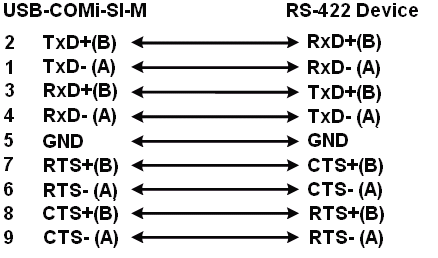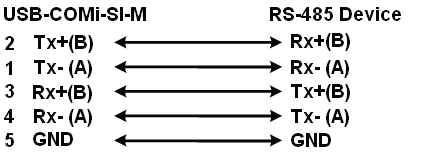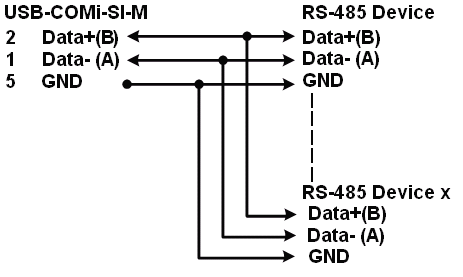Hardware
Setting & Mode Configuration
Outside the unit, there is one 4-pin DIP switch which is set to select the mode of operation. You will need to set the switch settings to RS-422, or RS-485 mode as per the requirements of your application.
After the setting of DIP switch, you then plug the adapter to USB port to start driver installation. The Mode Block Configuration Settings are listed as follows
SW (External DIP Switch)
|
|
Operation Mode |
S1 |
S2 |
S3 |
S4 |
|
RS-422
|
4 wire with Handshaking |
ON |
ON |
OFF |
OFF |
|
RS-485
|
Full Duplex (4 wire) |
ON |
OFF |
OFF |
OFF |
|
Half Duplex (2 wire) - with Echo |
OFF |
OFF |
OFF |
ON Note |
|
|
Half Duplex (2 wire) - without Echo |
OFF |
OFF |
ON |
ON Note |
Note : In the most common situation , an 120 Ohm termination resistor of TxD (S4 is ON ) is required in RS485 Half Duplex configuration. Otherwise it is rarely used.
JP1 for Termination and Biasing Option Configuration
Inside the unit, there is one 2 x 6 (12 pin) header blocks which are jumpered to enable Rx, CTS 120 Ohm termination resistors and Tx, Rx 750 Ohm BIASing resistor.
You will need to open up the metal case and set the jumper setting for RS-422 mode or RS-485 mode as per the requirements of your application.
Settings are listed as follows:
|
Jumper |
Function |
|
1-2 |
This
jumper should be populated for pull-up |
|
3-4 |
Pull-down
This
jumper should be populated for pull-down |
|
5-6 |
Rx
Termination of 120 Ohm. This
jumper should always be populated for RS-422 mode. |
|
7-8 |
Pull-up
Rx+ to VCC by 750 Ohm Bias resistor. This
jumper should be populated for pull-up Rx+ |
|
9-10 |
Pull-down
Rx- to GND by 750 Ohm Bias resistor. This
jumper should be populated for pull-down Rx- . |
|
11-12 |
CTS
Termination of 120 Ohm. This
jumper should be populated for RS-422 mode. |
Note
: Sometimes, when operating in RS-422 or RS-485, it is necessary to configure
termination
and biasing of the data transmission lines. Generally this must be done
in
the cabling, since this depends on the installation of connections. Before
applying the option, check your cable specification for proper impedance
matching.
RS-422/485 Pin-outs & Signal Wiring
RS-422/485
Pin-outs & Signal Wiring

RS-422 Signal Pin-outs of DB-9 Male (CN2)
|
Pin 1 |
|
|
Pin 2 |
|
|
Pin 3 |
Rx+(B) |
|
Pin 4 |
Rx- (A) |
|
Pin 5 |
GND |
|
Pin 6 |
RTS- (A) |
|
Pin 7 |
RTS+(B) |
|
Pin 8 |
CTS+(B) |
|
Pin 9 |
CTS- (A) |
RS-422 Signal Pin-outs of Terminal Block (TB1)
|
Pin 1 |
|
|
Pin 2 |
|
|
Pin 3 |
Rx+(B) |
|
Pin 4 |
Rx-(A) |
|
Pin 5 |
GND |
|
Pin 6 |
GND |



